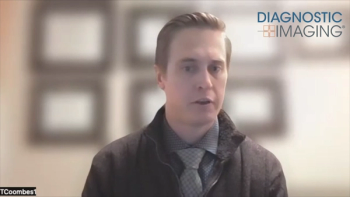
Polysaccharide-Core Contrast Agent as Gadolinium Alternative for Vascular MRI
Supramolecular Amorphous-like Iron Oxide could provide less toxic, more biocompatible high-resolution imaging.
A new polysaccharide core contrast agent could offer radiologists a less toxic, more biocompatible alternative to gadolinium when conducting MRI scans for blocked blood vessels.
In a study published March 8 in
Related Content:
It is a next-generation contrast agent that simultaneously provides high resolution and safety, said Jinwoo Cheon, Ph.D., director of the Institute of Basic Science (IBS) Center for Nanomedicine at Yonsei University College of Medicine in Seoul, South Korea.
“SAIO is expected to play a vital role in increasing the accuracy of the diagnosis of cerebro-cardiovascular diseases, such as stroke, myocardial infarction, angina, and dementia,” added Byoung Wook Choi, M.D., professor from Yonsei University College of Medicine.
According to the researchers, SAIO, which is stable without aggregation and is non-iron leaching for up to a year, has several features that can make it an attractive gadolinium alternative. At 5 nanometers in size, it is roughly 1,500 times smaller than the microvascular diameter, allowing it to circulate more easily throughout the body, they said. It is also primarily composed of dextran cross-linked with other molecules, and an iron oxide coating on its polysaccharide core gives it paramagnetic properties at room temperature.
For their study, the team compared the contrast performance, retention, and renal clearance profile for SAIO to Dotarem, a gadolinium-based contrast agent, as well as iron oxide nanoparticles. Based on their analysis, they found that SAIO offers very high resolution imaging – its images are 10-times more precise than those produced with current imaging agents. In animal experiments, it provides 3D brain vascular mapping that can clearly pinpoint micro-vessels in the brain as thin as a hair – 100 microns. Enhancement also lasts much longer with SAIO than with Dotarem – more than 10 minutes versus less than 2 minutes, respectively, Choi said.
Related Content:
With these capabilities, Cheon and Choi said, SAIO can not only give radiologists sufficient time to conduct imaging procedures, but it can also allow providers and researchers to see heart blood vessels that are currently difficult to see with current MRI contrast agents.
From the perspective of the patient, they said, SAIO is an attractive alternative because it readily clears the kidneys without accumulating in the liver of spleen.
For more coverage based on industry expert insights and research, subscribe to the Diagnostic Imaging e-Newsletter
Newsletter
Stay at the forefront of radiology with the Diagnostic Imaging newsletter, delivering the latest news, clinical insights, and imaging advancements for today’s radiologists.




























